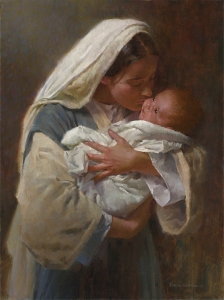 From December 2017 through February 2018, I wrote a series of short articles for MennoMedia’s Adult Bible Study Online. Over the past three weeks I have reproduced those here in my blog. Here is the article for February 11, 2018, based on James 3:1-12.
From December 2017 through February 2018, I wrote a series of short articles for MennoMedia’s Adult Bible Study Online. Over the past three weeks I have reproduced those here in my blog. Here is the article for February 11, 2018, based on James 3:1-12.
With evocative and memorable imagery, James 3 highlights the power of our words, both positively and negatively. Our words can create or destroy. They can build up or tear down. They can help or harm. The things we say, and how we say them, matter. This is especially true for anyone in a position of influence—including, but not limited to, the “teachers” James mentions.
For me, the most remarkable statement in this passage comes toward the end of it: “With the tongue we praise our Lord and Father, and with it we curse human beings, who have been made in God’s likeness” (3:9). This statement is significant for at least three reasons.
First, it affirms the truth that all humans are created in God’s image (Gen 1:26-27). Sin has not altered this fact, nor is this a special status only for Christians who are intentionally being conformed to the image of God in Christ (Rom 8:29; 2 Cor 3:18; Col 3:10). All humans, including those we consider “the least” or “our enemies,” have been made in God’s image.
Second, this statement affirms the truth that our relationship with God is inseparable from our relationships with others. How we treat other people is the real litmus test of the authenticity and depth of our relationship with God. This is emphasized in various ways throughout the New Testament, most bluntly in 1 John 4:20: “Those who say, ‘I love God,’ and hate their brothers or sisters, are liars.” This truth goes back to Jesus, who linked “love of God” with “love of neighbors,” love of “strangers,” and even “love of enemies” (Matt 22:36-40; 25:34-40; 5:43-48).
Third, this statement affirms that this second truth extends not just to our actions but also to our speech, both how we talk to other people and how we talk about them. Gossiping about others, spreading unfounded rumors. Slandering others, sowing known lies. Harassing others, throwing cruel, demeaning words their way. Bullying others, verbally intimidating them. Anathematizing others, cursing them beyond the pale. How many times do we passive aggressively smile to people’s face but then cut them down behind their back?
James’ teaching here has particular relevance in our digital age, in the realm of social media. Safe behind our computers or smart phones, we say things to and about people that we would never say to their face, or never say off line at all. Yet behind that icon on the screen is an actual eikōn of God, a human person created in God’s very “image.” If we wouldn’t speak of God in that tone, with those words of “cursing,” how can we speak of another person in that way?





